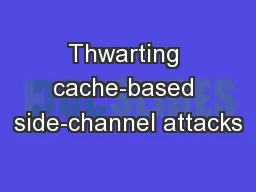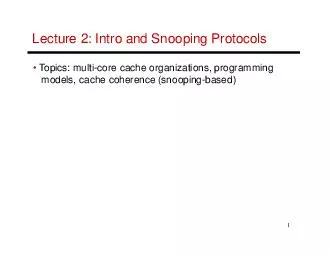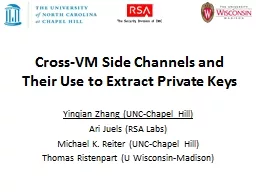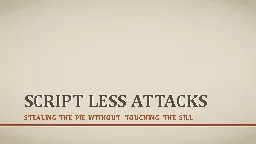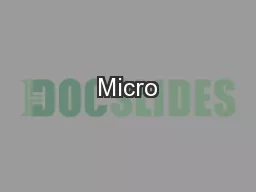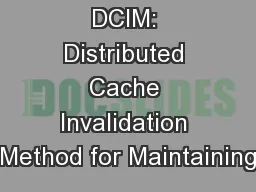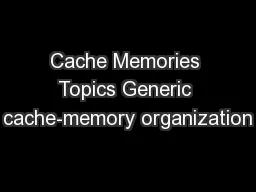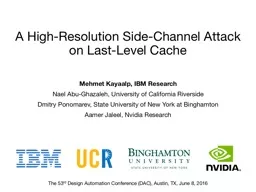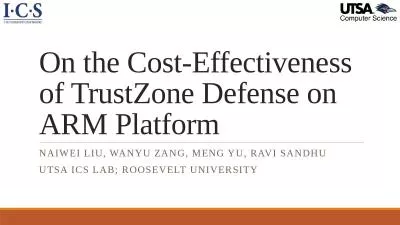PPT-Thwarting cache-based side-channel attacks
Author : myesha-ticknor | Published Date : 2017-06-26
Yuval Yarom The University of Adelaide and Data61 The binary search needs to be done in constant time to avoid timing issue But its fast so theres no problem
Presentation Embed Code
Download Presentation
Download Presentation The PPT/PDF document "Thwarting cache-based side-channel attac..." is the property of its rightful owner. Permission is granted to download and print the materials on this website for personal, non-commercial use only, and to display it on your personal computer provided you do not modify the materials and that you retain all copyright notices contained in the materials. By downloading content from our website, you accept the terms of this agreement.
Thwarting cache-based side-channel attacks: Transcript
Download Rules Of Document
"Thwarting cache-based side-channel attacks"The content belongs to its owner. You may download and print it for personal use, without modification, and keep all copyright notices. By downloading, you agree to these terms.
Related Documents

